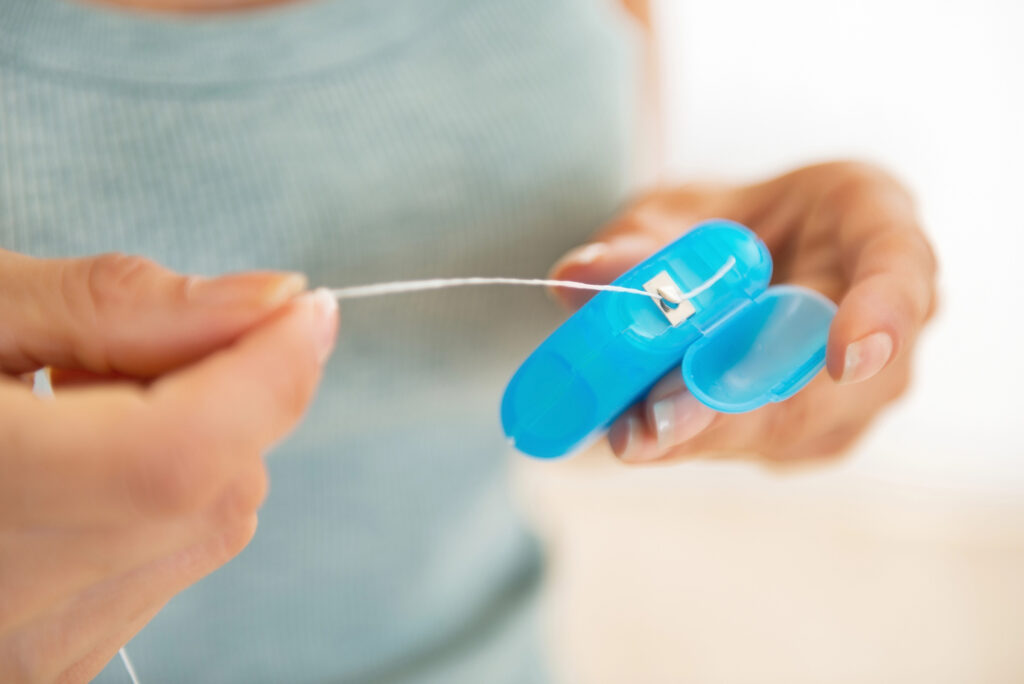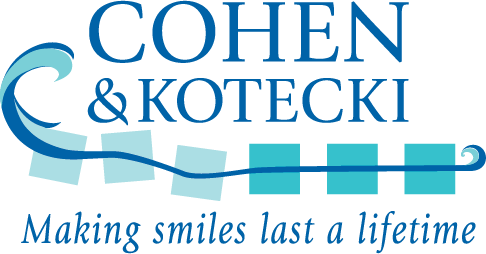Beginners Guide on How to Floss with Braces

Flossing is such an important part of our oral hygiene, whether you have braces or not. However, if you or your child have had braces, you already know that flossing with braces can be very challenging. It’s harder to work around the brackets and make sure you get everywhere. For some people, it feels impossible and many will avoid it for that reason.
However, keeping your teeth and gums healthy while wearing braces is so important. Learning how to floss with braces is essential to ensure your teeth are protected while you go through orthodontic treatment. In this guide, we will walk you through exactly how to floss and what you can do to practice effective flossing.
Why is Flossing with Braces So Important?
It doesn’t matter if you’re wearing kid’s braces or adult braces, flossing is absolutely essential. Nobody should skip flossing – braces or not. The act of flossing helps to get into the tiniest of places in your mouth to remove plaque and food particles that can get stuck in the crevices and build up. The reason we have to floss is because a toothbrush simply cannot reach every little place.
When you add braces to the mix, you have even more nooks and crannies that food particles and plaques can hide in. Flossing is essential to help remove this and avoid cavities or buildup that can lead to other oral health problems.
When you don’t floss or your flossing is ineffective, you could face many of these issues:
- Tooth decay
- Gum disease
- Staining
- Prolonged or more treatment
Trapped food turns into plaque, which will produce acid that attacks your teeth. This can cause swollen and irritated gums or cause your orthodontic treatment to be less effective because of these issues. Learning how to floss with braces will help ensure you effectively remove debris and plaque from areas your toothbrush isn’t reaching. And by doing so, you maintain a healthy and vibrant smile!
Flossing with Braces: A Step-By-Step Guide
From adolescent braces to adult braces, the process to floss is the same. If you find that using traditional floss is too challenging, you can use other tools to help support your process. We will share more on this later. To start, check out this step-by-step guide walking you through how to floss with braces using traditional floss.
1. Gather Supplies
Ideally, when you have braces, you are going to want to use a floss threader to help with the process. This means you need your dental floss as well as that floss threader. They also make orthodontic floss picks that can be very helpful for the flossing process.
When you choose your floss, we recommend waxed dental floss for braces. Unwaxed floss can shred or tear on your braces and is less effective for this process. Gathering supplies is a quick step, but it’s important to get the right type of floss. Using a floss threader or orthodontic floss will help to simplify the process.
2. Use a Floss Threader
A floss threader makes it easier to handle the floss and to get it behind your brackets and wires of the braces. It’s like a needle that will guide your floss beneath that archwire. Without the guide, it’s incredibly tedious to manipulate floss through and around the wires of your braces. That floss needs to get into every little space. Can you imagine doing that without any guided help?
Tear off a piece of floss about 18 inches long and thread it in your floss threader. Now, you can take the floss threader and thread it under the wire to pull it through to hold with both hands.
3. Position Your Floss
The next step is to get the floss properly positioned so you can start moving it between your teeth. You’ve already threaded the floss and placed it under your wire. Now, follow these steps:
- Gently slide the floss between the tooth
- Curve your floss around a single tooth using a “C” shape and move it up and down to clean all around the tooth and bracket
This takes just a few seconds from start to finish and will effectively get all of the plaque and gunk from that tooth and bracket.
4. Repeat
Now, you will need to repeat the entire process for each tooth. It may take some time to get used to threading your floss and the proper placement. Once you get that routine down, it won’t take that long to complete the flossing process.
Remove the floss from the tooth that you have completed, thread it through the next one’s wire and repeat the flossing process until you are finished. Threading your floss through your braces will ensure you get between the entire tooth and around your brackets fully.
Additional Tools to Help
An orthodontic flosser is a big help, but there are some additional tools that might make this process even easier. As you learn how to floss with braces, you might consider adding some tools to help clean around your brackets.
One popular option is interdental brushes. These little brushes are great to insert between your wires and your teeth and get all around those brackets. It works similarly to a toothbrush, but it’s much smaller and uses a different material so you can get between your teeth with it more easily. We recommend using this with your flossing process.
If you don’t want to mess with threading your floss, you might consider orthodontic floss picks. These are little picks specially designed to help reach all the way around your teeth even with the braces. They are a great choice for simplicity and convenience.
And finally, you might consider a water flosser to help. Water flossers are great tools and many orthodontists recommend them when you get braces. The tool uses pressurized water that you can direct at your teeth and gums. The pressurized and focused stream of water will remove plaque and debris and can be used to support or replace your flossing process, especially for hard to reach spaces.
Final Thoughts
This guide for how to floss with braces helps flossing seem like less of a chore for any person with braces. Take a complex process and simplify it by following these steps and using the tools that can make flossing with braces easier overall. You can always go to your orthodontist or dentist if you need additional guidance to better floss with your braces.










